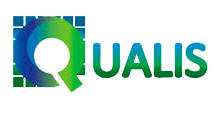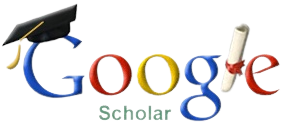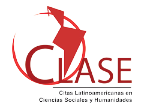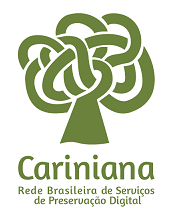The role of vocabularies to the access and reuse of Big Data
DOI:
https://doi.org/10.5433/1981-8920.2021v26n4p146Keywords:
Big Data, Vocabularies, Structured data, Unstructured data, Linked Open DataAbstract
Objective: Similar to the “information explosion”, the Big Data phenomenon has been increasingly the object of CI/OC. How to discover, access, process and reuse the huge and growing amount of data that is continuously made available on the web by our society? In particular, how to deal with the so-called “unstructured data”, textual documents, which have always been the object of CI/OC?
Methodology: Broad spectrum theories such as Ontology and Semiotics were used to analyze data as an essential element of Big Data, especially “unstructured data”.
Results: From the analysis of several data definitions, a given is identified as part of already known logical and semiotic schemes, the propositions. One piece of data is found together with others, forming data sets. Data sets are actually sets of propositions. These are present in what is known as structured data - tables in relational databases or spreadsheets. Textual documents also contain sets of propositions. Structured data is compared to “unstructured data”.
Conclusions: Although at the limit, both contain propositions and can be equivalent, as sets, structured data are expressed and perceived as a whole, sets of "unstructured data" are procedural, expressed sequentially, which makes the identification of unstructured data more difficult in text documents for processing by machines.
Downloads
References
ARISTÓTELES. Categorias. Lisboa: Instituto Piaget, 2000.
BERNERS-LEE, T.; HENDLER, J.; LASSILA, O. The semantic web. Scientific American, may, 2001.
BUNGE, M. Treatise on Basic Philosophy. In: BUNGE, M. Ontology I: The furniture of the World. Dordrecht, Holland, Boston, USA: D Reidel Publishing, 2015.v.3
CAPURRO, R. Angeletics -A Message Theory. In: DIEBNER, H. H.; RAMSAY, D. L. (ed.). Hierarchies of Communication. Karlsruhe: ZKM - Center for Art and Media, 2003.
CHAKRABORTY, G.; PAGOLU, M. Analysis of Unstructured Data: Applications of Text Analytics and Sentiment. SAS GLOBAL FORUM, v.8, 2014,
Washington DC. Conference Paper. SAS: Washington DC, Mar. 2014.
CLARKE, S. G. D. The Information Retrieval Thesaurus. KO KNOWLEDGE ORGANIZATION, v. 46, n. 6, p. 439-459, 2019.
COGNIZANT. Making Sense of Big Data in the Petabyte Age. Cognizant, 20- 20 insights, jun. 2011. Disponível em: https://www.cognizant.com/whitepapers/Making-Sense-of-Big-Data-in-thePetabyte-Age.pdf. Acesso em: 02 abr. 2021.
DATA SCIENCE CENTER EINDHOVEN. Responsible Data Science: Ensuring fairness, accuracy, confidentiality & transparency by design. 2020. Disponível em: https://www.tue.nl/en/research/research-areas/datascience/responsible-data-science/. Acesso em: 02 dez. 2020.
EBERENDU, A. C. Unstructured Data: an overview of the data of Big Data. International Journal of Computer Trends and Technology, v. 38, n. 1, p. 46-50, 2016.
FAIR Compliant Biomedical Metadata Templates. CEDAR, Center for Expanded Annotation and Retrieval, University of Stanford, Department of Medicine, 2019. Disponível em: https://medicine.stanford.edu/2019- report/cedar-to-the-rescue.html. Acesso em: 15 ago. 2021.
FISHER, M.; SHETH, A. Semantic Enterprise Content Management. In: SINGH, M. P. The practical handbook of internet computing. Boca Raton, FL: Chapmann & Hall/CRC, 2004. (Computer and Information Science Series.)
FLORIDI, L. Semantic Conceptions of Information. In: ZALTA, E. N. (ed.). The Stanford Encyclopedia of Philosophy. Palo Alto: Metaphysics Research Lab, 2019. Disponível em: https://plato.stanford.edu/archives/win2019/entries/information-semantic/. Acesso em: 21 dez. 2019.
GUARINO, N. Some ontological principles for designing upper level lexical resources. In: INTERNATIONAL CONFERENCE ON LANGUAGE RESOURCES AND EVALUATION, 1., 1998. Granada. Proceedings […]. Granada: ELRA, 1998. Disponível em: https://arxiv.org/pdf/cmp-lg/9809002. Acesso em: 22 maio 2005.
HEY, T.; TREFETHEN, A. The data deluge: An e-science perspective. In: BERMAN, F.; FOX, G. C.; HEY, A. J. G. Grid computing: making the global infrastructure a reality. Wiley: West Sussex, 2003. p. 809-824. Disponível em: https://eprints.soton.ac.uk/257648/1/The_Data_Deluge.pdf. Acesso em: 10 out. 2020.
INMON, W.; LINSTEDT, D. Data Architecture: a primer for the data scientist. Waltham, MA, Elsevier, 2015.
MACIEL, J. Elementos de Teoria Geral dos Sistemas. Petrópolis: Vozes, 1974.
MARCONDES, C. H. Em Busca de uma Semântica do Digital, Ou “As They May Think”. Ponto de Acesso, Salvador, v. 6, n. 2, p. 35-73, 2012.
ORILIA, F.; PAOLETTI, M. P. Properties. In: ZALTA, E. N. The Stanford Encyclopedia of Philosophy. Palo Alto: Metaphysics Research Lab, 2020.Disponível em: https://plato.stanford.edu/archives/win2020/entries/properties/. Acesso em: 9 maio 2020.
PEIRCE, C. S. Collected papers of Charles Sanders Peirce: principles of philosophy. Cambridge: Harvard University Press, 1931. v. 1.
PEIRCE, C. S. On a new list of categories. In: AMERICAN ACADEMY OF ARTS AND SCIENCES, 7., 1868, Cambridge. Proceedings […]. American Academy of Arts and Sciences: Cambridge, 1868. p. 287-298. Disponível em: http://www.bocc.ubi.pt/pag/peirce--charles-list-categories.pdf. Acesso em 28 jul. 2018.
PRASANNA, J. K. L.; SASI KIRAN, K. S. M. Significance of metadata and data modelling of metadata by using mark logic. International Journal of Engineering and Advanced Technology, v. 8, n. 2, p. 76-78, 2018.
RAYWARD, W. B. The Universe of Information: the work of Paul Otlet for Documentation and international organization. Moscou: FID/VINITI, 1975.
RDF Semantics. W3C, 2004. Disponível em: https://www.w3.org/TR/rdf-mt/. Acesso em: 27 ago. 2021
RILEY, J. Understanding metadata: what is metadata and what is it for: a primer. Baltimore: NISO, 2017. Disponível em: https://groups.niso.org/apps/group_public/download.php/17446/Understandin Metadata.pdf. Acesso em: 13 mar. 2021.
ROWLEY, J. The wisdom hierarchy: representations of the DIKW hierarchy. Journal of information science, v. 33, n. 2, p. 163-180, 2007. Disponível em: http://web.dfc.unibo.it/buzzetti/IUcorso2007-08/mdidattici/rowleydikw.pdf. Acesso em: 14 jun. 2013.
SANTAELLA, L. Epistemologia semiótica. Cognitio: Revista de Filosofia, v. 9, n. 1, p. 93-110, 2008. Disponível em: https://revistas.pucsp.br/cognitiofilosofia/article/viewFile/13531/10042. Acesso em: 12 nov. 2020.
SANTAELLA, L. O que é Semiótica. São Paulo: Ed. Brasiliense, 1983. SANTOS, F. E. P.; FARIAS, M. G. G.; FEITOSA, L. T.; CAVATI SOBRINHO, H. Definição de metadados e critérios de indexação para documentário em repositório audiovisual. Revista Brasileira de Biblioteconomia e Documentação, v. 14, n. 3, p. 237-261, 2018. Disponível em: https://rbbd.febab.org.br/rbbd/article/viewFile/1092/1089. Acesso em: 19 nov. 2020.
SANTOS, P. L. V. A. C. SANT’ANA, R. C. G. Dado e granularidade na perspectiva da informação e tecnologia: uma interpretação pela ciência da informação. Ciência da Informação, Brasília, v. 42, n. 2, p. 199-209, maio/ago.2013.
SANT’ANA, R. C. G. Ciclo de vida dos dados: uma perspectiva a partir da Ciência da Informação. Informação & Informação, Londrina, v. 21, n. 2, p. 116-142, maio/ago. 2016.
MACULAN, B. C. M. S. Estudo e aplicação de metodologia para reengenharia de tesauro: remodelagem do THESAGRO. 2015. Tese (Doutorado em Ciência da Informação) – Universidade Federal de Minas gerais, Belo Horizonte, 2015. Disponível em: https://repositorio.ufmg.br/bitstream/1843/BUBD9ZKMUV/1/maculan_tese_arq_final.pdf.pdf. Acesso em: 24 maio 2019.
SOERGEL, D.; LAUSER, B.; LIANG, A.; FISSEHA, F.; KEIZER, J.; KATZ, S. Reengineering thesauri for new applications: the agrovoc example. Journal of digital information, v. 4, p. 1-23, 2004. Disponível em: http://hdl.handle.net/10760/15694. Acesso em: 25 abr. 2016.
ZENG, M. L. Interoperability. In: HJØRLAND, B.; GNOLI, C. (ed.). ISKO Encyclopedia of Knowledge Organization. ISKO, 2019a. Disponível em: http://www.isko.org/cyclo/interoperability. Acesso em: 18 set. 2019.
ZENG, M. L. Semantic enrichment for enhancing LAM data and supporting digital humanities. Review article. El profesional de la información, v. 28, n. 1, 2019b. Disponível em: https://doi.org/10.3145/epi.2019.ene.03. Acesso em: 22 jan. 2019.
Downloads
Published
How to Cite
Issue
Section
License
A revista se reserva o direito de efetuar, nos originais, alterações de ordem normativa, ortográfica e gramatical, com vistas a manter o padrão culto da língua e a credibilidade do veículo. Respeitará, no entanto, o estilo de escrever dos autores. Alterações, correções ou sugestões de ordem conceitual serão encaminhadas aos autores, quando necessário.
O conteúdo dos textos e a citação e uso de imagens submetidas são de inteira responsabilidade dos autores.
Em todas as citações posteriores, deverá ser consignada a fonte original de publicação, no caso a Informação & Informação.














